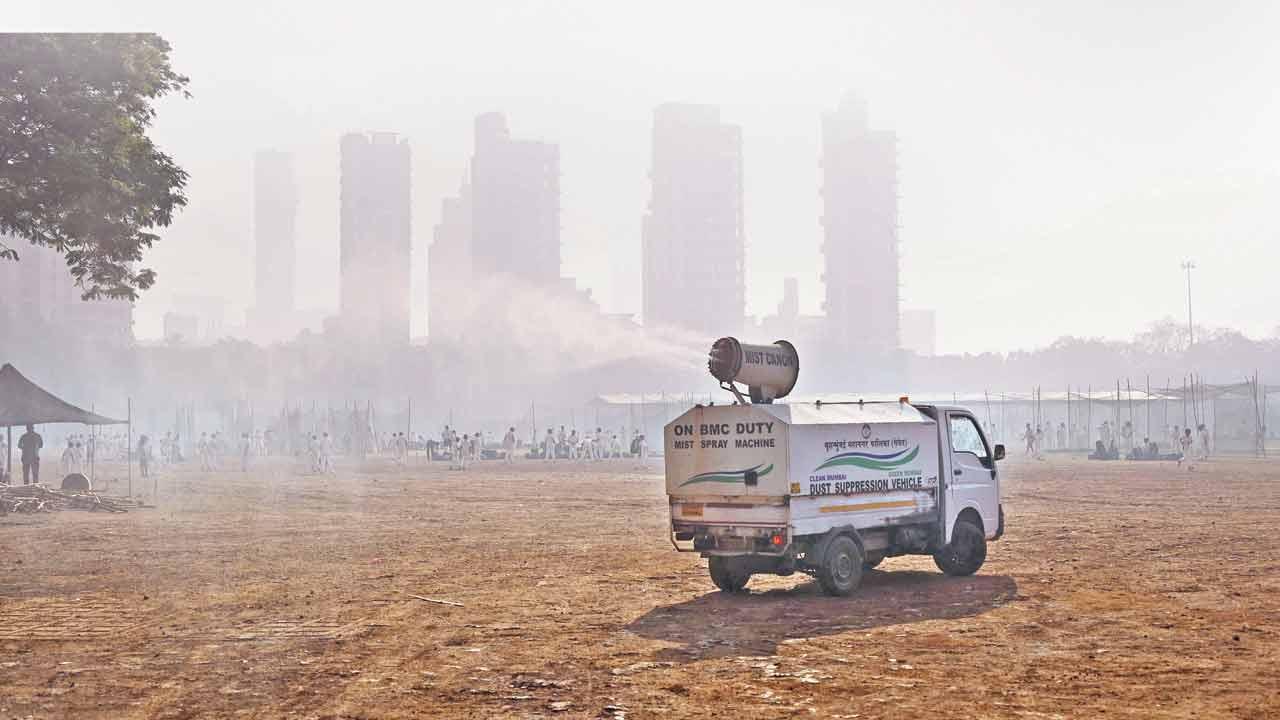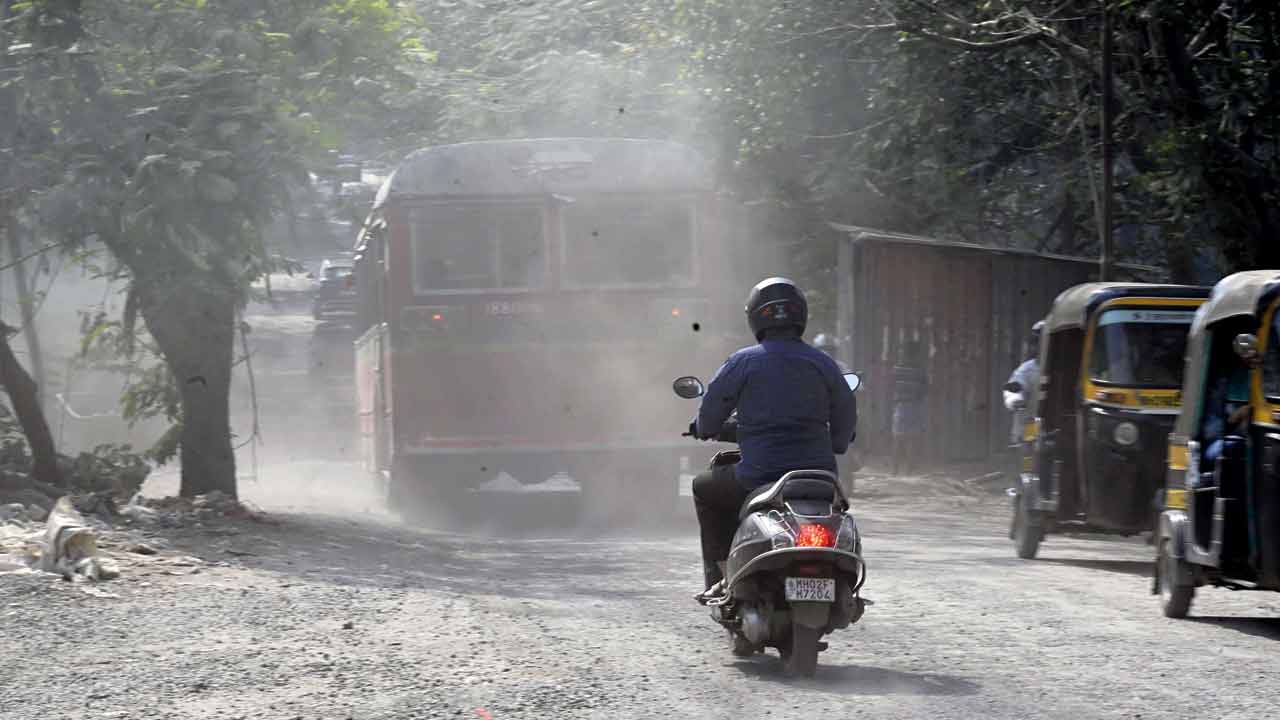Four-year study by scientific solutions body reveals that city’s air quality has consistently overshot the national safety limit; while 2024 saw a modest improvement, the figures remain well above the safe limit

A BMC vehicle equipped with a mist cannon sprays water as a dust-mitigation measure at Shivaji Park in Dadar. File Pic/Ashish Raje
A new study has shattered the long-held belief that Mumbai’s coastal location shields it from air pollution during the summer. A four-year analysis of data by Respirer Living Sciences has shown that PM10 (particulate matter) levels in the city have consistently breached the national safety threshold of 60 micrograms per cubic metre.
The study, carried out using the AtlasAQ platform, paints a stark picture, between 2021 and 2024, Mumbai’s annual PM10 averages stood at 109.3 μg/m³ (micrograms per cubic metre) in 2021, 119.7 μg/m³ in 2022, 118.6 μg/m³ in 2023, and 90 μg/m³ in 2024. While 2024 saw a modest improvement, the figures remain well above the safe limit.
“This data tells a very clear story: there is no clean season left in Mumbai,” said Ronak Sutaria, founder and CEO of Respirer Living Sciences. “Even in the summer months, PM10 levels are not just above the limit, they are several times higher. This is a citywide, year-round issue that must be addressed through urban planning, infrastructure reform and regulatory enforcement.”

Aarey Milk Colony in Goregaon (East) is engulfed in dust as concreting is carried out on the road to Royal Palms on February 27. Pic/Ashish Raje
Station-level data highlights the extent of the problem across different parts of the city. In 2024, Malad West saw PM10 levels spike to 154.5 μg/m³—a nearly 50 per cent increase from the previous year. Shivaji Nagar, one of Mumbai’s most polluted areas, recorded a staggering 211.0 μg/m³ in 2023 before dropping to 102.2 μg/m³ in 2024—still 70 per cent above the national limit.
At Siddharth Nagar in Worli, PM10 levels more than doubled from 57.1 μg/m³ in 2021 to 119.2 μg/m³ in 2023, with only a minor dip to 105.1 μg/m³ in 2024. Other consistently high-pollution zones include Chakala in Andheri East, Kurla, Deonar, Vile Parle West and Mazagaon, all of which have exceeded the safety limit year after year.
The report identifies several root causes behind Mumbai’s PM10 burden, including traffic emissions, unregulated construction dust, industrial activity in port zones, and a lack of effective dust control measures. It calls for a multi-pronged strategy involving: Strict enforcement of dust suppression protocols at construction sites, expansion and enhancement of public transport, improved traffic management systems and real-time, ward-level air quality monitoring to drive targeted local action.
“It is recommended that clean air goals be integrated into Mumbai’s master plans and transport infrastructure policies to ensure equitable and measurable improvements,” Sutaria said.
What is PM10?
It refers to particulate matter with a diameter of 10 micrometres or less, small enough to be inhaled deep into the lungs. In urban areas like Mumbai, construction dust is one of the major contributors to PM10 pollution. Exposure to PM10 can lead to serious respiratory and cardiovascular issues, especially among children, the elderly and those with pre-existing health conditions. It forms a part of the broader category of particulate pollution, which also includes finer particles like PM2.5 (2.5 micrometres or smaller).
2022
Year city recorded avg PM10 level of 119.7 micrograms per cubic metre
 Subscribe today by clicking the link and stay updated with the latest news!" Click here!
Subscribe today by clicking the link and stay updated with the latest news!" Click here!








